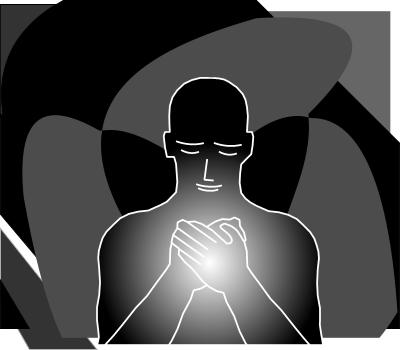What Is Your Educational DNA?
With a new school year underway, I am thinking about new beginnings. It is not unusual for our educators, students and families to consider this time as an opportunity for fresh starts – a reasonable and hope-filled thought of wiping a slate clean of past incidents, behaviors or patterns. With this thinking also comes a risk of over simplification that erases the impact of our history. I believe history should be respected – even painful or challenging history. Specific to our work as educators, I contend it is impossible to consider how schools reproduce biases and inequities for our current youth without considering how the institution that is school has played out in our own lives. Psychologist Carl Jung suggests, “until you make the unconscious conscious, it will direct your life and you will call it fate.”
Specifically, as we consider our histories, I push us to consider our educational history – or more complexly, our educational DNA or the educational values, beliefs and expectations espoused and modeled by our families, tribes and cultures (informed by their own educational experiences) and the educational messages and practices we actually have experienced in our own schooling. The work of exploring our educational DNA is constant and continuous identity work that pushes us to explore and interrogate our individual and collective histories to better understand our schemas and cultures, values and biases as they show up with and around us each day – consciously and unconsciously. Towards the goal of making the unconscious conscious (or the invisible visible), we at SF-CESS ask our partners to name “the skin they are in” as well as to unpack their equity and leadership stance in any given situation. As participant facilitators, we constantly ask the same of ourselves.
So, this “new year” I wish to make transparent my own reflection of my educational DNA and equity stance – in the skin I am in. I offer this – not only to challenge you to do the same, but also (hopefully_ to Illustrate how constant and continuous personal identity work (as it relates to our professional work) requires imperfection, incompletion and vulnerability – conditions that continue to be counterintuitive in our school and leadership models. While this reflection comes on top of years of exploration and interrogation, it looked very different when I first started and is sure to look different in the future after additional the mistakes, successes and reflection I have yet to have.
On My Educational DNA… An Incomplete and Ongoing Reflection
I am a product of public schools. As a product of public schools, I both have been overtly a benefactor of the racism and sexism historically and systemically embedded within our educational system’s design, and simultaneously a target of its inherent, complex and regenerative classism and homophobia. My experiences growing up as a working poor, gay, Lebanese/ Italian student in white male skin has served to construct and instruct my perspective of the work in which I now find myself.
White and male, I heard explicit and implicit messages that conveyed expectations for me to succeed in school (e.g. “You’ll make a great doctor,” lawyer, etc.). Yet gay and closeted (and despite well-established statistical evidence that suggests at least one LBGT student can be assumed to be in any class of 30 students), I heard the consistent message in classrooms, cafeterias, schoolyards, and halls that school was not a safe place for people like me – and therefore, not a place for me. My “dual” identity gave me the privilege of being in the room, unknowingly undercover, as those around me discussed their intentional hatred for and fear of a group of people that included me.
My parents wanted me to excel in school even though they struggled to find their own access to my formal education in a system that had not always served them. My mother earned her GED, and thanks to the GI Bill, my father attended night school for his Associates Degree – but never left his role as a factory worker.
I attended a college-prep high school that predominantly served wealthier students from the East Side of Providence, RI. The assumption and expectation was that my family, from the west side, would be the primary support for my journey to college. I was to be the first in my family to attend a four-year college right from high school.
After repeatedly trying to meet with my counselor to begin my college application process, I finally caught her in passing. She told me she did not have time for me; “Besides,” she reasoned, “your family cannot afford college.” That year, I had scored in the top 10-20% of standardized tests.
Finally, after years of hearing and rebelling against the message that school was not for me, I listened. I cut 80 days of school in my Senior year. No one seemed to know. No one checked on me. No one called my family. No one failed me. Invisible, ignored and de-humanized, I heard that my education did not matter; I learned that I did not matter.
My family’s message about the importance of education was consistent. Their messages about school were different, as they saw education coming from not only school, but also home. While they recognized that the two did not always align (school was for book knowledge and home was for life lessons), they did expect us to be respectful and obedient in both places.
As my education advanced and my social skills matured, assumptions about my background perpetuated. Simply by looking at my skin color and hearing me talk, those around tended to be quick to assume my history – including the assumption that I came from a family more affluent and formally educated than was true. It was less frequent that these assumptions were checked, and as a result, I once again found myself amidst people who discussed my life (welfare/ food stamps, working class values, multiple-language families, worthiness to have certain privileges such as recreation, transportation and food) without actually realizing I was in the room.
So much of our Educational DNA is determined by the skin we live in. In America, the skin we live in is defined first and foremost by race; it also is so much more. It has been my experience that unexamined, the skin I am in can be baggage weighing me down; examined, the skin I am in serves as a source of great pride and strength – of liberation. Exploring the skin I am in both excites and frightens me. That is the first thing I need to remember.
The skin I am in is so much more than the skin you see, and yet the skin you see is so much of who I am. Even in all my complexity, the institution that is public education automatically and inequitably favors me as a white man. Furthermore, I purport, that regardless of my espoused and sincere values and beliefs, I always have the option to discount my less visible target status by embracing and taking advantage of my skin privilege. Absent intentionality, I ultimately will. Thus, I must commit to the continuous self-examination and consistent work towards serving as an ally, agent and accomplice across difference.
My professional stance has evolved from a culmination of experiences – my own, my family’s and those of the people with and for whom I work. Beyond my own formative years as a child and student, my professional identity is challenged and transformed by the stories of my students, colleagues, and families. These experiences influence my decisions, results and reflections. I carry them with me whenever I walk in a room.
What I know today is that I am committed to the equitable education of youth – specifically and first for the benefit of those who are not provided equitable access & opportunity (most often our black, brown & poor students). Growing up in a working poor family taught me the value of humility as an essential leadership trait. AND ALSO, given the repetitive & predictive data in our schools & communities across difference, I believe I need to build on and from my actual experience & knowledge gained over nearly 30 years of service, study and results.
Thus I, in the skin I am in as a queer, white man, bring to my work a tension of recognizing that I always will know less than I need to know – particularly in service of communities to which I do not belong – especially across race, language & gender, AND ALSO that, I feel urgency to use what I do know to vigorously & unapologetically interrupt & transform inequities when they are in front of me and constantly work with and for others to create conditions for them to do the same.
So, what is your educational DNA?




